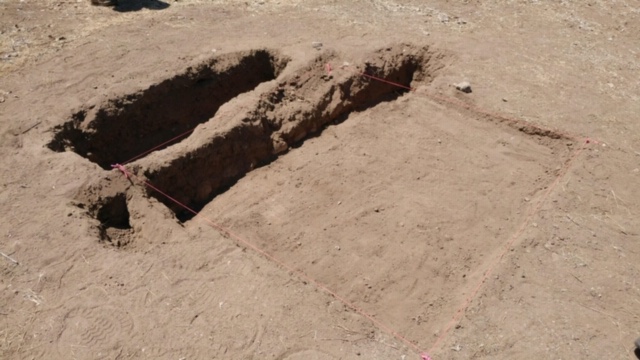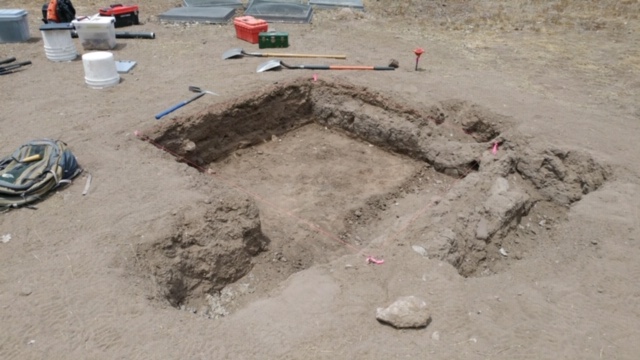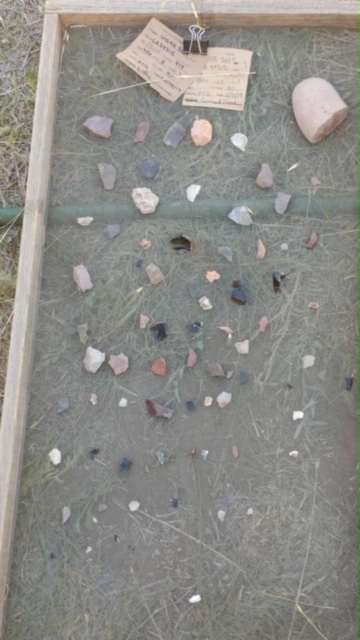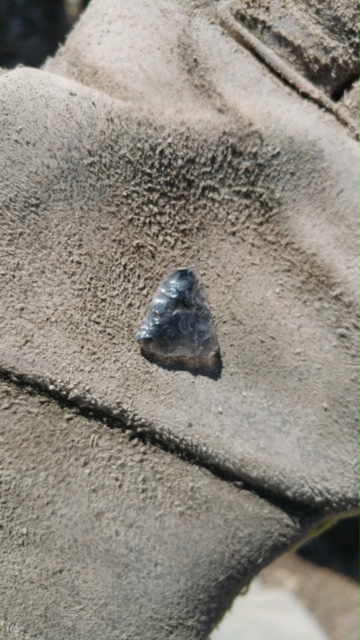- Home
- >
- Preservation Archaeology Blog
- >
- Treasures in the Screen
(June 10, 2019)—I’ve always found archaeology particularly interesting. The history of places, the people who lived in them, and the materials they left behind when they moved on sparked my imagination, and I eventually struck out from my home in New York for a small college in Maryland to pursue study of anthropology and archaeology. Before I knew it, my junior year was coming to a close, and I was offered a place at the Preservation Archaeology Field School. I was thrilled to finally get to jump into the dirt myself.
Since arriving, I’ve had the chance to participate in the first archaeological field work of my budding career, and although I’ve spent a fair amount of time in college learning about how to set up a unit on site and excavate, I never got the chance to actually dig for myself, until now.
The field school staff had relocated an adobe wall dating to around AD 1350 that they had spent some time excavating in the past. This year, it was time to go in a new direction, and the wall was used as a starting point to set up the unit that our crew would be excavating. Two meters by two meters was measured out and marked off with pink string to help keep it visible, and excavation began in earnest. Centimeter by centimeter, I filled buckets with dirt from the unit, shoveling a slowly descending pit so that we could sift the fill through an artifact screen and locate as many artifacts as possible, and not lose any of the precious data from our unit.

Immediately, I began to see what the unit had to offer, and in the sifting screens, I quickly started to find what was hidden just below the surface. We found Salado and other types of pottery fragments, once parts of bowls and jars people ate and drank from and stored their extra food in, painted with intricate designs. There was also stone that had been ground down to form tools, a surplus of bones from not only rodents, but deer and fish as well, and pieces of shell ranging from tiny to a massive unaltered piece. And, of course, flakes of stone from making tools to perform any number of tasks and activities.

Stone artifacts are something near and dear to me, as I do practice flintknapping, the art of making tools from stone, in my spare time. To see the same types of by-products that I knock off stones come out of a screen from a site hundreds of years old is a feeling that I had to experience myself to fully understand. What others might see as nothing more than broken rocks, I see as hours of careful planning, weeks of frustrating failure, and moments of joy that touch the soul when a flake goes exactly where one wants it to.
The greatest example of this process that I personally pulled out of the sifting screen was a tiny obsidian projectile point. I never knew what I was going to find in my screen or my shovel, or even in the bottom of the unit. I really am amazed at what I’ve helped to uncover after only my first week on site, and I’m excited to see what comes out of the dirt next.

